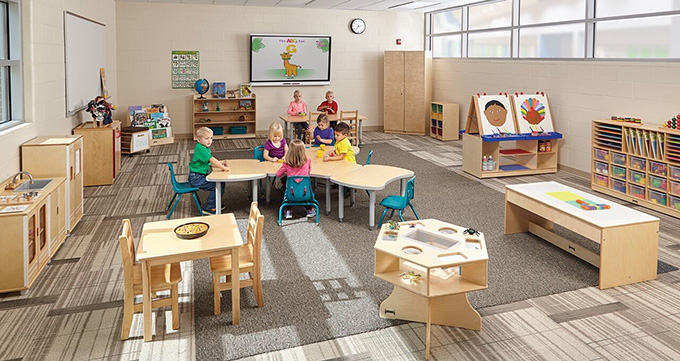
An often overlooked element of providing children with a strong education is the environment in which they learn. We focus on the teachers and the curriculum but not necessarily on where the students are learning. Ignoring a student’s environment is a mistake, as it can have a big impact on their overall ability to learn and succeed.
Below, we’ll dive into the importance of a clean learning environment for children. This includes the different places students learn and the various benefits that come from a clean and organized area. Hopefully, this will highlight the importance of educators and parents focusing some of their energies on learning environments and providing students with a better overall learning experience.
Learning Environments Extend Beyond the Classroom
While the classroom is a child’s primary learning environment, it’s important to recognize that there are other environments as well. Children learn in many places, like schools, bedrooms, and places of worship. Therefore, when working to ensure children have a clean environment in which to learn, we should focus on all possible learning environments.
For example, according to Compass Cleaning Solutions, “A clean church isn’t just about appearance—it’s about creating a space where learning and spiritual growth can thrive. When students walk into a spotless, well-maintained environment, they’re more focused, more at peace, and better able to absorb the teachings.” While children may spend most of their time learning in a classroom, cleaning and organizing their other environments can be just as important.
Better Student Performance
The biggest benefit of a clean learning environment for children is better grades. Studies have shown that when children learn in an optimized environment, they perform better academically. For instance, one study of UK primary schools found that classroom environment can impact student grades by up to 16%. Compared with the impact that teachers can have, which generally ranges from 8% to 20%, it’s clear that the classroom environment has a potentially big impact.
Prevents the Spread of Germs
Another benefit of a clean learning environment is that it prevents the spread of germs. As anyone with children can tell you, they aren’t always the cleanliest of creatures. It’s not uncommon for children to spread colds to one another, which can then spread back at home.
While it may be near impossible to keep kids sanitary at all times, regular classroom cleanings can do a lot to reduce the spread of germs. Many germs are spread through shared surfaces, such as door handles, desks, chairs, and bathroom facilities. Using a disinfectant on student desks and in other key areas of a classroom can eliminate germs and reduce their spread.
Easier to Focus
When you have a cleaner and more organized space, it becomes easier to focus. You’ve likely experienced this yourself. You sit down to work, only for the clutter around you to cause a distraction. Before you know it, you’re cleaning instead of getting your work done. And, even if you manage to stick with your work, the clutter around you still sticks around in the back of your mind.
Children are no different. If they are surrounded by distractions or a cluttered environment, they’ll find it hard to concentrate on learning. Instead, they need areas that are free from mess to signal to their brains that it’s time to focus on the task at hand.
According to Psychology Today, “Clutter can be especially distracting for students with overexcitabilities (Rankin, 2016), and removing it has been shown to increase on-task time and even improve test scores (Morrison, 2015), which comprise one type of measure of learning.” Therefore, the simple act of removing clutter from a learning environment can go a long way.
Development of Good Habits
If you can involve the students in the cleaning and organizing of their learning environment, you’ll help to instill good habits. When students learn to clean up after themselves or keep their spaces organized, they’ll continue to do so as they grow older. Then, when the time comes for them to learn things on their own, they’ll know how to do so in a clean environment.
This doesn’t mean we should recruit kids into scrubbing classroom floors. But, if we can teach habits like organizing their desks or throwing away unnecessary items, it will help them in the long run.
More Productive Teachers
Finally, while we’ve focused on the benefits to students from a clean learning environment, there is also the benefit that it provides teachers. Just like anyone else, teachers feel more motivated to teach when they do so in a positive environment. Teaching can be a difficult profession, but by providing teachers with a clean environment, we make it a little easier to come to work and have a positive impact on children. Happier teachers provide better instruction, which only benefits children further.
